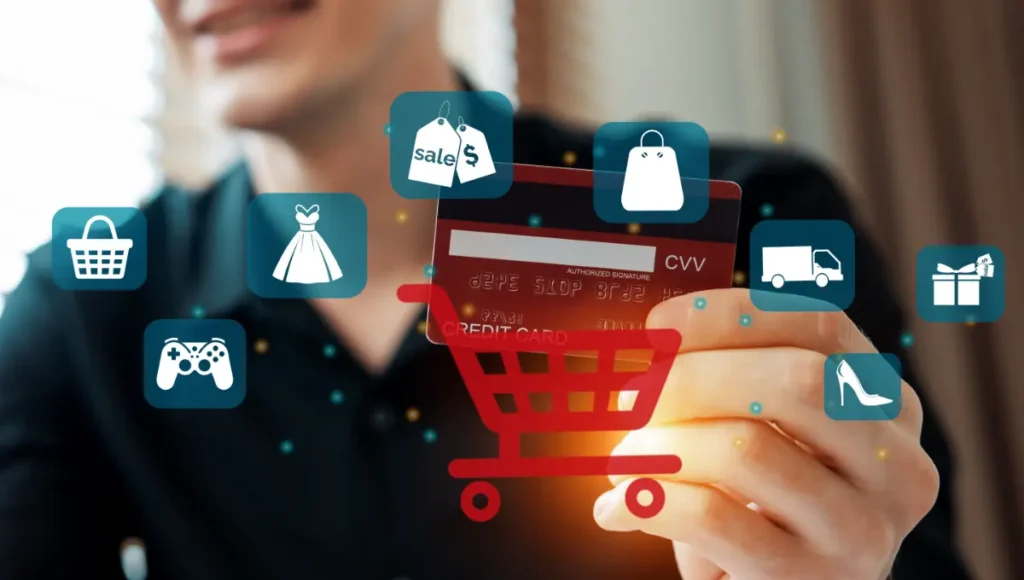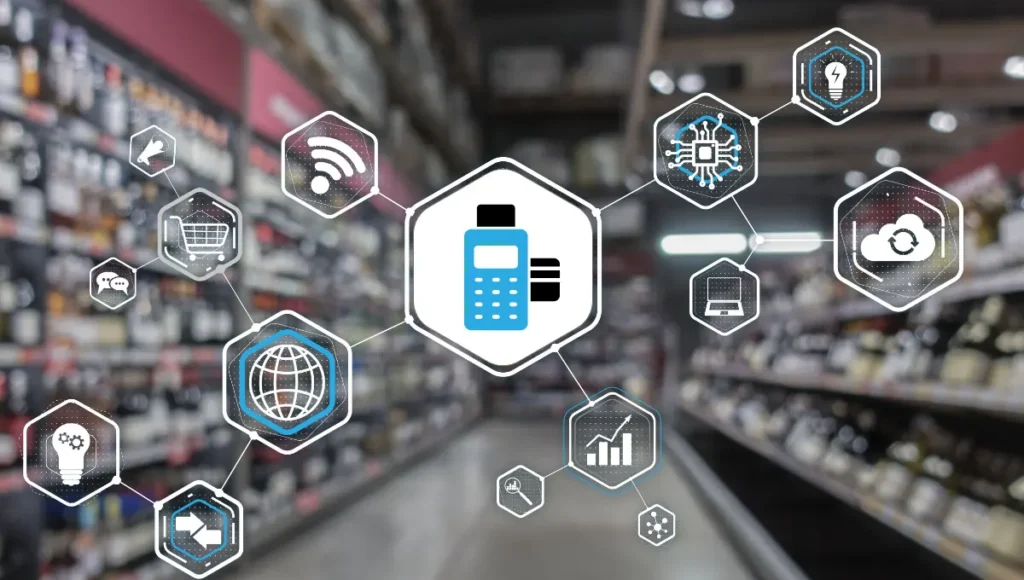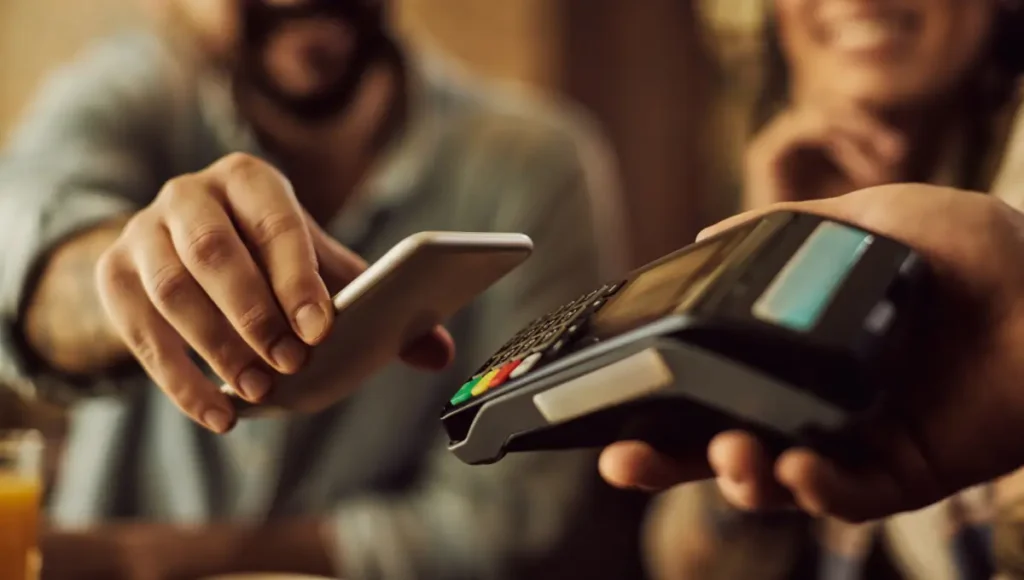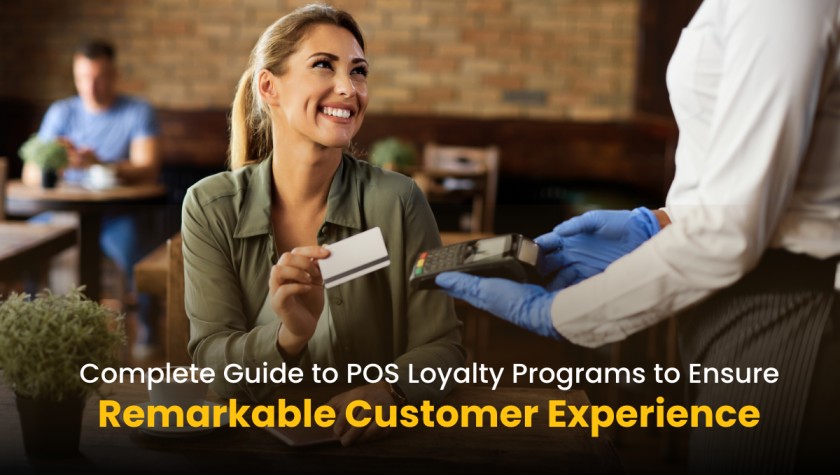As the majority of consumers transition between physical and digital realms in their shopping journey, providing them with a cohesive and intuitive experience that caters to their preferences and behavior is required for retailers to gain trust and establish a long-term relationship with customers. The integration of online and brick-and-mortar operations holds the key here.
Central to this integration is the strategic implementation of a loyalty program that seamlessly spans every customer touchpoint in this dynamic omnichannel retail landscape, including in-store Point of Sale (POS) systems.
In this article, we will explore the benefits of integrating a customer loyalty program with in-store POS systems, the key features of such a POS-enabled loyalty program, and how to implement it to maximize its impact on customer engagement, data-driven insights, and seamless omnichannel experiences.
Benefits of a POS Loyalty Program

1. Faster Member Enrollment
Integration with POS systems can make the member enrollment process simple and quick. Instead of requiring customers to fill out lengthy forms, cashiers ask customers if they would like to join the loyalty program during checkout. The cashier can then quickly enroll them using minimal information such as the member’s name and email address.
Members could also be encouraged to sign up for the loyalty program using their mobile devices in-store by scanning a QR code at the POS or using a mobile app to link their account to their purchase.
2. Instant Gratification
Offering instant rewards, discounts, or a welcome bonus upon enrollment can encourage customers to sign up on the spot. For example, customers could receive a discount on their current purchase or earn bonus points immediately upon joining the program; in such a case, ensure that points are credited to their account instantly and are visible on their receipt.
New members could get immediate access to exclusive benefits or perks, and member-only discounted pricing on their current purchases. This demonstrates the immediate value of joining the loyalty program and is more likely to entice customers to engage with the brand in the future.
3. Data Insights
POS loyalty programs can generate a wealth of data about customer behavior, preferences, and purchasing patterns. By analyzing this data along with that collected from online storefronts, businesses can gain valuable insights into their target audience and tailor their marketing strategies accordingly. Understanding which products are most popular when customers tend to make purchases, and how much they typically spend enables businesses to make informed decisions that drive growth and profitability.
Gathering feedback at the POS from loyalty program members while they are in the store can give insights into their satisfaction levels and expectations, and identify areas for improvements such as the checkout process, store layouts, customer service, etc.
4. Personalization
Analyzing data collected at the POS can allow businesses to provide personalized product recommendations or offers based on the customer’s preferences and purchase history. Personalization, when done well, is known to improve customer satisfaction multi-fold. Satisfied customers are more likely to recommend a brand to others, stay longer with it, and spend more on it.
5. Better Checkout Experience
VIP treatment such as priority checkout lanes or express checkout options for loyalty program members, allowing them to bypass long lines and complete their purchases more quickly, can go a long way in enhancing the overall shopping experience and demonstrate appreciation for their loyalty.
Allowing members to opt for automatic redemption of loyalty points or rewards during checkout can eliminate the need for members to manually request or apply their rewards. This simplifies the process and ensures that members receive their benefits without any extra effort. Allowing loyalty program members to store their digital loyalty cards or digital coupons in mobile wallets for easy access during checkout can eliminate the need for physical cards or paper coupons and improve convenience for members.
Key Features of an Effective POS Loyalty Program

An effective POS loyalty program allows in-store staff to enroll new members and engage existing members during the checkout process. It gives staff all the information they need about a loyalty member at their fingertips while allowing members to holistically engage with the brand online and in-store, using a single loyalty account.
Let’s explore the features essential for having an effective POS loyalty program.
1. Unified Loyalty and Checkout Experience
A POS system should have the following core loyalty functions built in.
- Staff should be able to enroll a new member into the loyalty program quickly using minimal information such as the member’s name and email address. Members can be incentivized to complete their profile at their convenience.
- Staff should be able to search an existing member using a member identifier such as their name, email address, membership number, phone number, etc. If a customer is unsure about their loyalty membership, then the staff should be able to ascertain it using the search functionality.
- The POS system should display a member’s details along with information such as their transaction history, accrued points, available rewards, membership tier, etc.
- Staff should be able to redeem points for rewards or discounts on behalf of the member during checkout.
2. User Friendliness
User-friendliness is paramount especially for a POS loyalty program because the loyalty functionality is embedded into the checkout process. Hence, it is important that the interaction with the loyalty program at the POS system is as non-intrusive, seamless, and intuitive as possible for both the staff and the customer.
The staff should need minimal training and technical support to operate the POS loyalty program. For members, whether they are signing up for the program, earning rewards, or redeeming points, the process should be straightforward, hassle-free, and accessible, catering to their diverse preferences for interacting with the system, e.g., via a mobile app or a digital wallet or simply providing staff with an email address or phone number.
These days POS systems are not tied to a specific hardware and can often work on various smartphones and tablets. So the POS loyalty program UI should be responsive and work well in portrait and landscape modes on all types of supported devices, e.g., iPhone, iPad.
3. Integration Capabilities
Loyalty members should not need separate accounts to interact with a loyalty program online and offline. This means that the loyalty program should be truly unified across both e-commerce and POS platforms.
Regardless of the loyalty touchpoint, all aspects of a loyalty program such as enrollment of a member, accrual of points, redemption of points for a reward, and change in a member’s membership tier, should be instantly reflected across all systems. This requires that the various systems involved, including the POS system, be integrated with a centralized member database, often maintained in a customer data platform (CDP). The integration should also support syncing of data from the POS system with the CDP or loyalty platform by uploading of batch files.
Additionally, the POS loyalty system should be integrated with other systems in the member journey, e.g., with marketing automation tools to automatically send email or text notifications to customers about updates to their loyalty profile after they interact with the program during checkout, and with e-commerce platforms to provide a seamless omnichannel member experience.
For example, Zinrelo’s integration with Shopify POS ensures real-time synchronization of member activities across Shopify’s e-commerce and POS platforms. Members can enroll in the loyalty program, accrue points for purchases, redeem rewards, and receive notifications, all in real time. This seamless integration helps create a cohesive and engaging loyalty experience, ensuring that customers enjoy the benefits of the loyalty program regardless of where they shop.
Implementing a POS Loyalty Program

POS loyalty programs can not only incentivize in-store purchases and drive foot traffic but when implemented well, they can also encourage customers to engage with the brand across multiple touchpoints, blurring the lines between physical and digital shopping experiences. Keep the following best practices in mind while implementing a POS loyalty program.
1. Set Clear Objectives
As another interface with your customers, a POS system is a great opportunity to engage them while they are in-store. Have well-defined objectives for your omnichannel loyalty program and the role you expect the POS system to play in enabling those objectives—whether it’s boosting sales, increasing customer retention, or gathering data for better member segmentation and personalization. By establishing clear goals, you’ll be better equipped to design and implement a program that aligns with your business objectives.
2. Selecting Best-of-Breed POS and Loyalty Platform
Choose the right POS system that allows you to implement the desired in-store customer journeys and loyalty program workflows at the POS. While some POS systems offer built-in loyalty features, those are often limited in their capabilities. It’s best to choose a POS system that supports integration with leading third-party loyalty platforms.
Choose a loyalty platform that offers out-of-the-box integrations with a variety of POS and e-commerce systems, allowing you to enable a truly unified omnichannel loyalty program. A platform like Zinrelo, for instance, provides a robust suite of APIs and webhooks, allowing you to customize your loyalty program implementation as your needs change.
A loyalty platform that offers flexibility in deploying campaigns based on different member attributes, transaction attributes, product categories, and stores can support sophisticated use cases both online and in-store. A selection of rewards, ranging from coupons or vouchers to cashback and bonus points, and gamification such as in-store treasure hunts, can engage members.
The ability to monitor and analyze your loyalty program is crucial for its success. So the loyalty platform you choose should also have strong data analytics and visualization capabilities. In addition to built-in reporting, the loyalty platform should allow you to export data to a third-party system such as the CDP or business intelligence (BI) tool you are using.
Zinrelo’s POS Capabilities
Zinrelo offers robust POS integration capabilities that seamlessly blend with a wide range of POS systems, ensuring a unified and efficient loyalty experience. Our platform supports real-time data synchronization between the POS and the loyalty program, enabling instant rewards and redemptions at the point of sale. With Zinrelo, businesses can implement sophisticated loyalty workflows that are tailored to their specific needs, whether in-store or online. Our advanced APIs and webhooks facilitate deep customization, while our comprehensive analytics suite provides valuable insights to help you fine-tune your loyalty strategies.
4. Evangelize the Loyalty Program
Display promotional materials and signage at the POS terminals and key locations in stores to inform customers about the loyalty program and encourage sign-ups. Inform them about various ways at the POS or by scanning a QR code from their mobile device. Cashiers should be trained to ask customers and encourage them to sign up for the loyalty program during checkout. Digital marketing campaigns via email, social media, and digital advertising can be used to promote the loyalty program to a wider audience and encourage sign-ups.
5. Staff Training
Train staff members on how to use the integrated POS and loyalty program effectively, ensuring smooth operation and customer satisfaction. Ensure that frontline staff are able to effectively promote the loyalty program and enroll customers at the POS. Provide them with scripts or talking points to use during checkout to explain the benefits of joining the program and encourage enrollment.
Conclusion
In an era where consumer expectations demand seamless experiences across both physical and digital channels, the integration of loyalty programs with in-store POS systems emerges as a critical strategy for retailers. By bridging the gap between online and offline interactions, POS-enabled loyalty programs offer a plethora of benefits, from real-time data insights to personalized experiences and enhanced checkout processes.
As outlined in this article, the strategic implementation of POS loyalty programs requires careful consideration of key features such as unified experiences, user-friendliness, and robust integration capabilities. Selecting the right POS system and loyalty platform, setting clear objectives, and effectively evangelizing the program are pivotal steps in maximizing its impact on customer engagement and retention. Moreover, by empowering staff with the necessary training and tools, retailers can ensure seamless operation and customer satisfaction at every touchpoint.
In essence, the integration of loyalty programs with POS systems represents not just a technological upgrade, but a strategic imperative for retailers seeking to thrive in the evolving omnichannel environment. With a well-executed POS loyalty program, retailers can unlock the power of omnichannel loyalty to forge deeper connections with customers, drive sustainable growth, and foster loyalty and advocacy in an increasingly competitive retail landscape.
Key Takeaways and Action Items
- Seamless Integration Across Channels: Implement a POS loyalty program that unifies online and offline customer interactions, ensuring a consistent and engaging loyalty experience.
- Instant Member Enrollment and Rewards: Simplify the enrollment process at the POS and offer instant rewards to new members to encourage sign-ups and immediate engagement.
- Leverage Data for Personalization: Utilize real-time data insights from POS transactions to tailor marketing strategies and provide personalized offers, enhancing customer satisfaction and loyalty.
- Enhance Checkout Experience: Offer VIP treatment, such as priority checkout lanes and automatic redemption of loyalty points, to improve the in-store shopping experience for loyalty members.
- Effective Staff Training and Promotion: Train staff to effectively use the integrated POS and loyalty system, and actively promote the loyalty program through in-store signage and digital marketing campaigns to maximize member enrollment and engagement.


